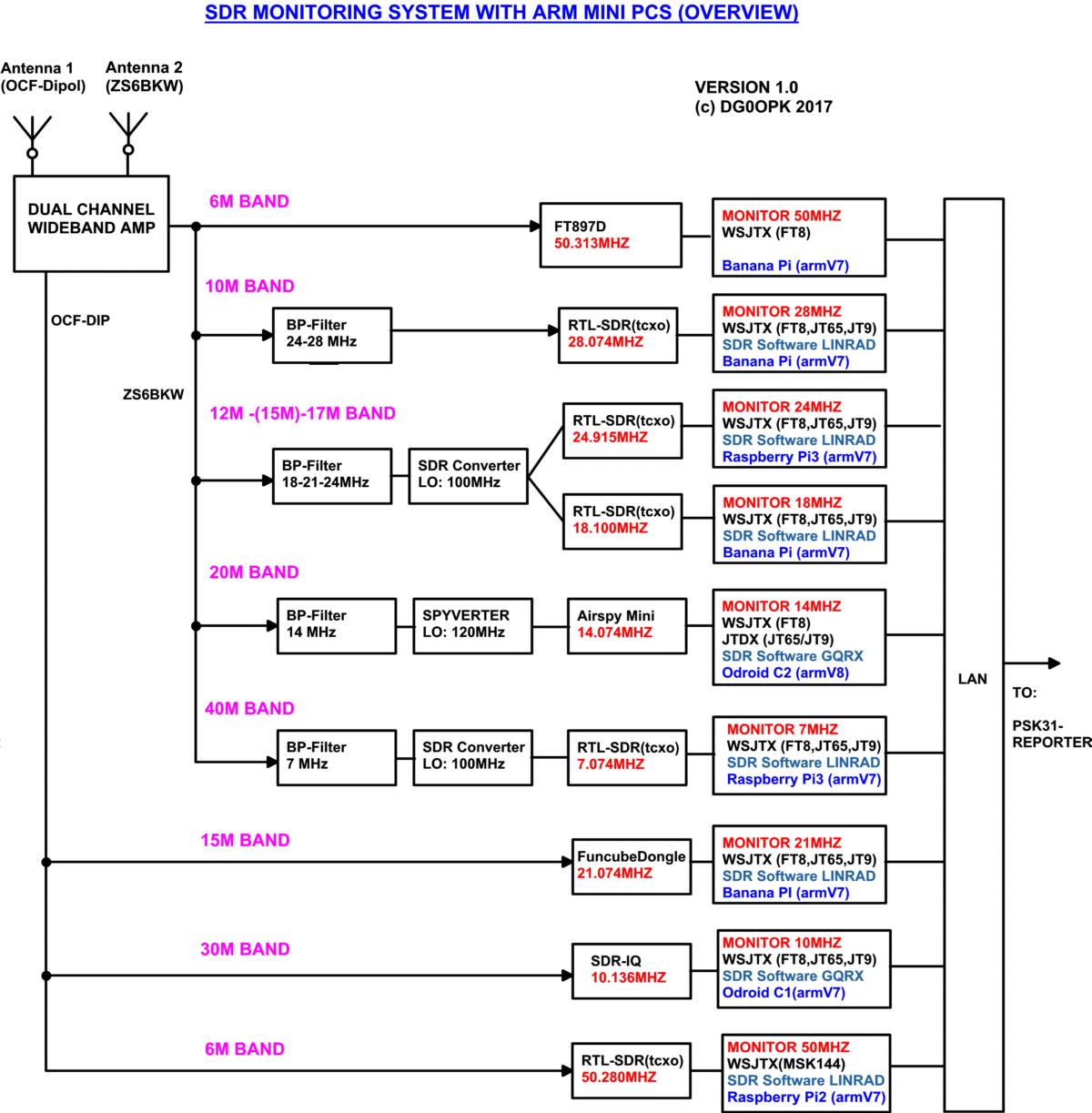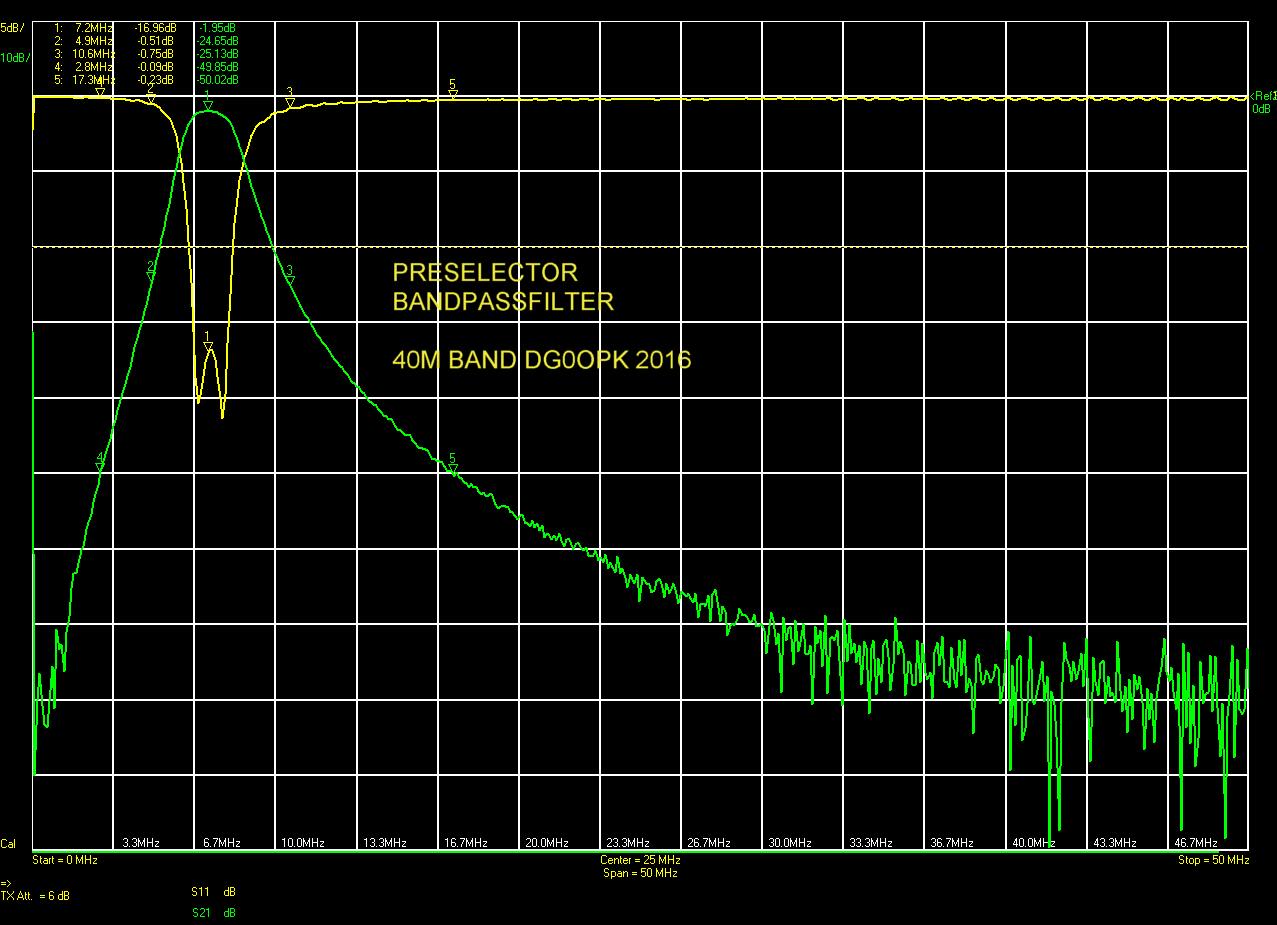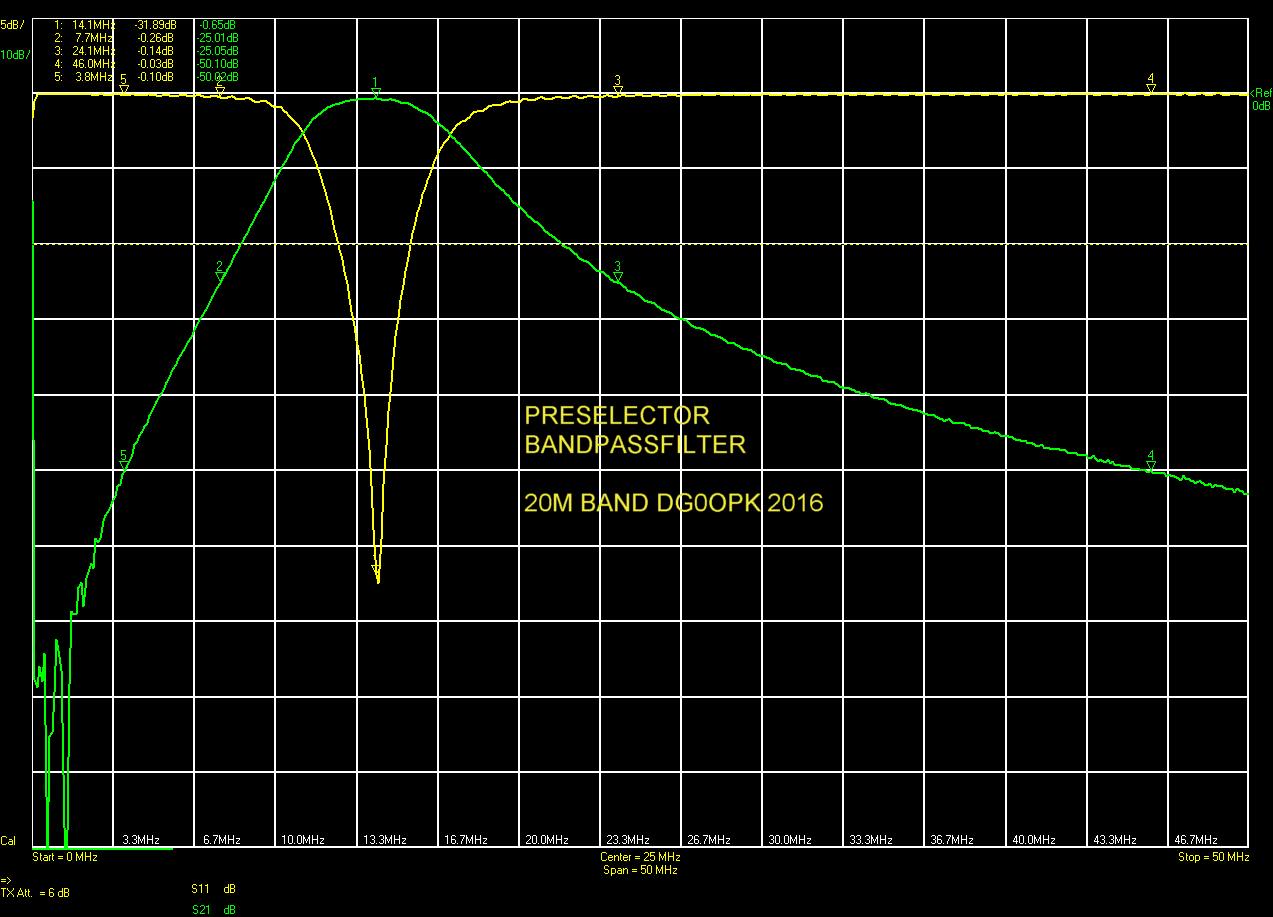(over 1year online now)
(last update: 12.october 2018 - reconfiguration after 2years online)
(last update: 30.november 2018 - WSJTX 1.9.1 and WSJTX 2.0.0 in parallel)
* PLEASE SCROLL DOWN TO THE END OR CLICK ON THE UPDATEINFO *
my goal for this work:
After the intensive tests of the ARM MiniPcs (Cubieboard, BananaPi, Odroid C1, Odroid C2 and RaspberryPIs)
in the years from 2014-2016 i put all together to realize an multiband monitoring system for shortwave
and to spot the received stations on my location to the PSK31reporter.
The system is very flexible and modular and can be used for the different digimodes depending on the installed software.
In the beginning (2016) it was used with JT65,JT9 and WSPR with the WSJTx and JTDX Software.
After the change in WSJTx to the new FT8 mode in 2017 it was easy to adapt it to FT8 only with an software update.
Monitoring the "old modes" JT65/JT9 together with FT8 can be easy realized to use an additional instance of WSJTx.
So the overall system concept of the system in the end of 2017 can be seen in the picture below.

antennas:
For the system i use my 2 homemade wire antennas (LINK). The signal from the antennas is fed to an
2 channel high IP3 wideband amplifier and splittet to the receivers for the different bands.
bandpass-filter:
For giving the receiving channels a better performance and selectivity i use my homemade bandpass filters
which are avaliable as a KIT in simple PCB and metal case version.
Here are some examples of the performance of the filters.
(more versions are made...look in the shop of box73.de - search DG0OPK)
80m Bandpass:

40m Bandpass:

20m Bandpass:

10-12m Bandpass:

ready made in the aluminium shielding case:

SDR-receiver and software:
It can be seen in the diagram on the top of this page that it is possible to use different combinations of ARM-MiniPCs and SDRs.
So the current used combinations are as follows:
- BANANAPI with RTL-SDR(tcxo) , LINRAD and 2 instances of WSJTx for monitoring FT8, JT65 and JT9
- BANANAPI with FuncubeDongle Pro+, LINRAD and 2 instances of WSJTx for monitoring FT8,JT65 and JT9
- BANANAPI with soundcard input from external TRX and WSJTx for monitoring FT8
- Raspberry Pi2 with RTL-SDR(tcxo), LINRAD and WSJTx for monitoring MSK144
- Raspberry Pi3 with RTL-SDR(tcxo), LINRAD and 2 instances of WSJTx for monitoring FT8,JT65 and JT9
- Odroid C1 with SDR-IQ, GQRX and 2 instances of WSJTx for monitoring FT8,JT65 and JT9
- Odroid C2 with Airspy(Mini), GQRX and WSJTx for monitoring FT8 and JTDX for monitoring JT65,JT9
spotting to PSK31reporter:
All receivers are connected together to my LAN and every receiver ist spotting his band and mode to the PSK31reporter.
The received stations can be seen in the PSK31reporter map in the example ... for the selected callsign DG0OPK.
update: 12.October 2018
After more than 2 years of operation mostly running 24/7 with monitoring on up to 11 amateur radio bands in parallel
many millions of spots are send to the PSK31reporter.
Under normal shortwave conditions 15.000 spots/day from 120-135 countries
could be received every day in 2018 (especially in the new FT8 mode).
I got a lot of interesting information about the propagation conditions on the shortwave
and about the performance of my simple wire antennas.
I have learnt a lot about the installation and the stability problems of the different used ARM Minicomputers.
The longest run without reboot was on the BananaPi (Debian Jessie) with around 250days.
Now I decided to reconfigure the system for more special monitoring purposes
on the higher bands in the actual solar minima.
update: 30.November 2018
The WSJTX FT8 protocol structure will change next time to give more flexibility to the users.
Contest and DXpedition use with more digits in the calls can be used in the new Version of WSJTX.
So i upgraded all systems now for monitoring the "old protocol" with WSJTX1.9.1 and the "new protocol" WSJTX 2.0.0 running at the same time.
Now there 2 running instances of WSJTX for FT8 on the small arm computers (BananaPi, Rpi2, Rpi3, Odroid C1) and
three instances 2x FT8, 1x MSK144 on 6m with my GNURADIO DUAL FREQUENCY RECEIVER on the ODROID C2
The monitoring for JT65/JT9 was disabled (at first) because of low activity.
If you need more Information write me an email
Back to main page
last change: 30.november 2018 (DG0OPK)